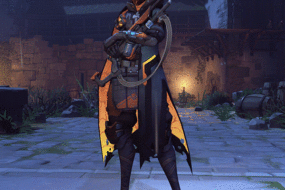| An Update on Next-Gen: PlayStation 5 Launches Holiday 2020 Since we originally unveiled our next-generation console in April, we know that there’s been a lot of excitement and interest in hearing more about what the future of games will bring. Today I’m proud to share that our next-generation console will be called PlayStation 5, and we’ll be launching in time for Holiday 2020.
These updates may not be a huge surprise, but we wanted to confirm them for our PlayStation fans, as we start to reveal additional details about our vision for the next generation. WIRED magazine covered these updates and more in a story that posted this morning. The “more” refers to something I’m quite excited about – a preview of the new controller that will ship with PlayStation 5. One of our goals with the next generation is to deepen the feeling of immersion when you play games, and we had the opportunity with our new controller to reimagine how the sense of touch can add to that immersion. To that end, there are two key innovations with the PlayStation 5’s new controller. First, we’re adopting haptic feedback to replace the “rumble” technology found in controllers since the 5th generation of consoles. With haptics, you truly feel a broader range of feedback, so crashing into a wall in a race car feels much different than making a tackle on the football field. You can even get a sense for a variety of textures when running through fields of grass or plodding through mud. The second innovation is something we call adaptive triggers, which have been incorporated into the trigger buttons (L2/R2). Developers can program the resistance of the triggers so that you feel the tactile sensation of drawing a bow and arrow or accelerating an off-road vehicle through rocky terrain. In combination with the haptics, this can produce a powerful experience that better simulates various actions. Game creators have started to receive early versions of the new controller, and we can’t wait to see where their imagination goes with these new features at their disposal. While there’s much more to share about PlayStation 5 in the year ahead, we have plenty of blockbuster experiences coming your way on PS4, including Death Stranding, The Last of Us Part II, and Ghost of Tsushima. I’d like to thank all PlayStation fans for continuing the journey with us, as we embark on the future of games. Jim Ryan – President & CEO, SIE blog.us.playstation.com |
| Exclusive: A Deeper Look at the PlayStation 5 • PlayStation 5 supports ray-tracing. This is not a software-level fix. “There is ray-tracing acceleration in the GPU hardware,” system architect Mark Cerny said, “which I believe is the statement that people were looking for.” • Physical games will use 100 gigabyte optical discs, which are inserted into an optical drive that doubles as a 4K Blu-ray player. • Game installation is mandatory, but a bit different than game installation on PlayStation 4. Installation and removal is a more configurable process. “Rather than treating games like a big block of data, we’re allowing finer-grained access to the data,” Cerny said. For example, you may be able to install just a game’s multiplayer campaign, and leave the single-player campaign for later. Or install the whole thing and delete the single-player campaign when you have finished. • The user interface has been completely revamped. “Even though it will be fairly fast to boot games, we don’t want the player to have to boot the game, see what’s up, boot the game, see what’s up,” Cerny said. “Multiplayer game servers will provide the console with the set of joinable activities in real time. Single-player games will provide information like what missions you could do and what rewards you might receive for completing them—and all of those choices will be visible in the UI. As a player you just jump right into whatever you like.” • The PlayStation 5 controller looks like the DualShock 4, but has a little hole in it, which Cerny said will be discussed at a later time. One of its new features is the “adaptive triggers,” which offer varying levels of resistance, and can make shooting a bow feel authentic in that the tension increases as you pull the arrow back, or make shooting a machine gun feel different from shooting a shotgun. It also has haptic feedback “far more capable” than the rumble motors of current controllers, with “highly programmable” voice-coil actuators in the left and right grips of the controller. • Sony demonstrated the controller features with demos of Astro Bot: Rescue Mission and Gran Turismo Sport. Here are Wired’s impressions: – Astro Bot: Rescue Mission – “I ran a character through a platform level featuring a number of different surfaces, all of which gave distinct—and surprisingly immersive—tactile experiences. Sand felt slow and sloggy; mud felt slow and soggy. On ice, a high-frequency response made the thumb sticks really feel like my character was gliding. Jumping into a pool, I got a sense of the resistance of the water; on a wooden bridge, a bouncy sensation.” – Gran Turismo Sport – “Driving on the border between the track and the dirt, I could feel both surfaces. Doing the same thing on the same track using a DualShock 4 on a PS4, that sensation disappeared entirely. It wasn’t that the old style rumble feedback paled in comparison, it was that there was no feedback at all. User tests found that rumble feedback was too tiring to use continuously, so the released version of Gran Turismo Sport simply didn’t use it.” • The PlayStation 5 controller uses a USB Type-C connector for charging and has a larger-capacity battery. While a bit heavier than the DualShock 4, it will still be a bit lighter than the current Xbox controller “with batteries in it.” • A number of studios already have PlayStation 5 development kits, and the controller prototypes began rolling out more recently. • Shadow of the Colossus developer Bluepoint Games is working on a PlayStation 5 title. “We’re working on a big one right now,” said Bluepoint Games president Marco Thrush. “I’ll let you figure out the rest.” He added, “The SSD has me really excited. You don’t need to do gameplay hacks anymore to artificially slow players down—lock them behind doors, anything like that. Back in the cartridge days, games used to load instantly; we’re kind of going back to what consoles used to be.”
Full Article on Wired |




